bfdadmin
Dr. Brandon Nelson, A Board Certified Physician & Surgeon, Discusses the Lapiplasty

Bunion surgery for me is a very exciting procedure to perform. I really enjoy fixing a large bunion and seeing the satisfaction on a patient's face. Bunions can be debilitating and really interfere with life. They make activities painful and are frustrating when buying shoe gear. I have now been fixing bunions for 15 years and have truly begun to love the Lapiplasty.
The Lapiplasty is an exceptional procedure for patients that have large bunions. It really has helped to create better outcomes and improved techniques for bunion repair. The Lapiplasty is based on the Lapidus procedure first described by Dr. Paul Lapidus. The procedure was popularized by Dr. Sigvard Hansen who was a local physician in Seattle. Some of us had the pleasure of meeting Dr. Hansen and spending time with him. He was truly an amazing physician that helped all of us foot and ankle surgeons.
If you are contemplating bunion surgery I would love to discuss your options with you. It is important to get an x-ray and to see a surgeon that performs a lot of bunion procedures. It is also convenient that at my practice we have an on-site surgery center. Having our own surgery center is extremely valuable to patients as it is not affiliated with a hospital or an ASC and therefore saves each patient thousands of dollars in comparison to having it done at one of the above locations. If you have a bunion I can help get you back to normal shoe gear and activities. Give us a call at 425-391-8666 or make an appointment online today.
Sincerely,
Dr Brandon Nelson, A Board Certified Physician & Surgeon, Discuss the most Common Bunionectomy Surgery

Bunion surgery is one of the most common surgical procedures in the United States. It is usually performed in an outpatient setting and no overnight stay is required. The majority of bunion surgeries take less than 2 hours and have great long term outcomes. The most common bunion surgery is an Austin bunionectomy as it is called. It has been utilized for almost 100 years and is a powerful tool in bunion correction.
The Austin bunionectomy traditionally involved a cut in the 1st metatarsal head. It was cut from medial to lateral in a chevron type fashion. This allows for correction of the abnormally aligned joint and removal of the bunion. It usually involves some sort of fixation to hold the bone in place like a screw or a pin. Some surgeons require a period of non-weight bearing and typically 3 months before back to normal activities.`
I personally have performed this type of bunion surgery 1000’s of times. I like to make a longer arm with my but on the bottom of the bone as opposed to a chevron style cut. This allows for a more rigid fixation and faster recovery. The typical patient can return to activities at 6 weeks.
If you have a bunion that is causing pain and want to have minimal downtime give me a call and I can review all your options. Remember I have an onsite surgery center that saves thousands as compared to having your procedure at a hospital or ASC.
Sincerely,
Dr Brandon Nelson, A Board Certified Physician & Surgeon, Discuss Heel Pain and When to See A Physician
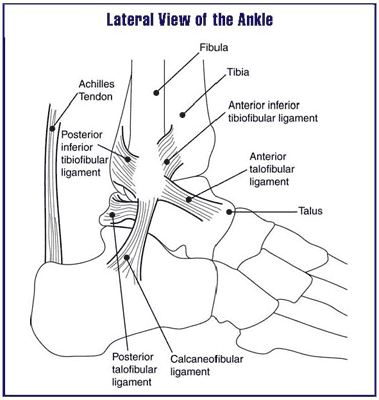
Heel pain is by far the most common pathology I see in the office. It is so common among adults it is estimated that 1 out of every 4 currently are experiencing heel pain. It is also postulated that 60% of all adults will have heel pain at some point in their lives. It is important to understand the causes of heel pain and when to seek professional help. The most common causes are plantar fasciitis, Achilles tendon issues and nerve entrapments or irritation.
Plantar fasciitis is by far the most common cause. It often is described as a dull ache or bruised sensation. This is usually on the bottom of the heel. Plantar fasciitis can be painful in the morning, first step pain, or after activities. One of the most common presenting symptoms is pain after any period of rest. Plantar fasciitis is an overuse injury and I recommend always seeking physician input on this one as you may develop tearing in the fascia with increased symptoms.
Achilles tendon issues can also present with pain in the heel or around the heel. The Achilles tendon is the thickest strongest tendon in the human body and it is constantly under load. It is therefore prone to developing issues especially in physically active individuals. The Achilles tendon type pathologies often have swelling or sharp shooting pains near the heel. Again this is one to seek help early as the average recovery of Achilles tendon issues can take 4-6 months.
Nerve entrapments of the heel or Baxter’s neuritis or tarsal tunnel syndrome often have burning or electrical type symptoms. There is a correlation with other nerve issues in the body like neuropathy or carpal tunnel or fibromyalgia. Nerve issues are an urgent matter and early intervention is key so do not wait on these ones. I recommend immediately making an appointment. The nerves usually require testing to identify and prevent long term damage.
If you are having heel pain I can help call and schedule an appointment today. Give us a call at 425-391-8666 or make an appointment online.
Sincerely,
Dr. Brandon Nelson, A Board Certified Physician & Surgeon, Discusses Ankle Pain
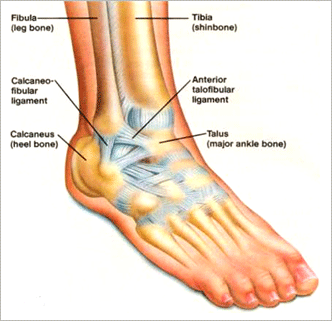
Dr. Brandon Nelson, A Board Certified Physician & Surgeon, Discusses Ankle Pain
Ankle pain is a large topic to discuss in a blog but I will focus on two of the most common causes. The vast majority of ankle pain follows an injury like an ankle sprain or an ankle fracture. When looking at an ankle sprain the most likely long term causes of pain are soft tissue issues. When looking at ankle fractures with time bone or joint pathologies can occur. Let us take a look at a common ankle sprain and what can be the long term results of untreated sprains.
Ankle sprains are one of the most common injuries that occur in the lower extremity. The vast majority of sprain occurs in an inversion type fashion or a rolling in of one’s foot. This puts a lot of strain on the ligaments and tendons on the outside of the ankle or the fibular side. We often see ligament tears or tendon tears that develop. These can lead to pain with activities or with certain movements. It is important to seek the help of a foot and ankle physician early with ankle sprains. It is amazing the amount of issues I see that could have been avoided by seeing a physician when the sprain occurred. It seems that the adage of “PRICE” or protect, rest, ice, compress and elevate just does not provide enough healing for athletes or active patients.
Ankle fracture on the other hand usually does seek medical intervention. It really depends on the type of fracture some patients will require surgery to realign the bones and some will do find with just a period of non-weight bearing. Ankle fractures usually have higher trauma velocities and therefore can cause more damage to the bones. One of the most common long term effects of a fracture can be arthritis. With fractures you can change the weight distribution in joints and over time this can wear away cartilage. Having all fractures evaluated by a medical professional with experience in that area is key.
I cannot express the importance of early intervention and seeking the advice of a foot and ankle physician will improve outcomes and long term functionality. If you have had an injury or are currently injured I can help.
If you are experiencing foot or ankle pain, please give us a call at 425-391-8666 or make an appointment online today.
Sincelry,
Dr Brandon Nelson
Dr Brandon Nelson, A Board Certified Physician & Surgeon, Discusses Bunion Surgery and Tips for Recovery
.jpg)
Dr. Brandon Nelson, A Board Certified Physician & Surgeon, Discusses Bunion Surgery and Tips for Recovery
Bunion surgery is one of the most common foot and ankle surgeries in the United States. On average I personally operate on around 100 bunions every year. It is a very rewarding surgery for patients with great outcomes. The hardest part is the recovery and I thought I would give some tips for patients that I have learned over the last 15 years. I will break this down into pain control, healing and rehab.
Pain control is essential for the first part of the surgical process. I find it beneficial for patients to be on a narcotic with an anti-inflammatory. I prefer Ibuprofen and usually only need any type of pain medication for the first couple days. Additionally, I recommend keeping your foot elevated for the first week and making sure to ice for 10 minutes every hour while you are awake.
Healing is another important factor for recovery. First bone healing this is usually the dictating factor for recovery. The average bone takes 12 weeks to heal so target therapy to decrease bone healing times can be helpful. I recommend always taking a bone healing supplement i.e. ProBono or Bone Up are two of my favorite over the counter supplements. Next would be skin and soft tissue, taking collagen, biotin and zinc can increase production of new skin cells. Once the wound has closed I like some sort of scar care cream or scar care product. You must use some sort of silicone based cream for best results.
Rehabilitation after bunion surgery often depends if other procedures were performed as well. Often times physical therapy can be helpful. I recommend that patients start moving their toes through range of motion as soon as the stitches are out. It is important to actively and passively move the toe joint to prevent stiffness. The ankle joint should be mobilized as well with such exercises as writing the alphabet with your foot multiple times a day. I hope you find these helpful.
If you are experiencing foot or ankle pain, please give us a call at 425-391-8666 or make an appointment online today.
Sincerely,
Dr. Timothy Young, a Board-Certified Foot Surgeon Discusses Achilles Tendon Problems in Children

Dr. Timothy Young, a Board-Certified Foot Surgeon Discusses Achilles Tendon Problems in Children
There can be overlap between Severs Disease (growth plate irritation) and irritation of the Achilles tendon at the insertion, because there is such close proximity to both. In many cases treatment for calcaneal apophysitis and Achilles tendon problems are very similar. In fact a tight calf muscle or Achilles tendon can be a causative factor in calcaneal apophysitis. Therefore stretching the calf muscle and night splint use can be very helpful. There are special braces that can help Achilles tendon problems and they also can support and help treat calcaneal apophysitis.
Biomechanics can also factor into this, and either having a high arch or low arch can both exacerbate both conditions. Therefore treatments with supportive athletic shoes, over-the-counter high-level arch supports and prescription orthotics can be effective treatments. The bottom line, is that as with most medical conditions, appropriate diagnosis and treatment can be very effective. And there are many treatment options.
If you are experiencing foot or ankle pain, please give us a call at 425-391-8666 or make an appointment online today.
Dr. Timothy Young, a Board-Certified Foot Surgeon, Discusses Removal of Hardware After Foot Surgery
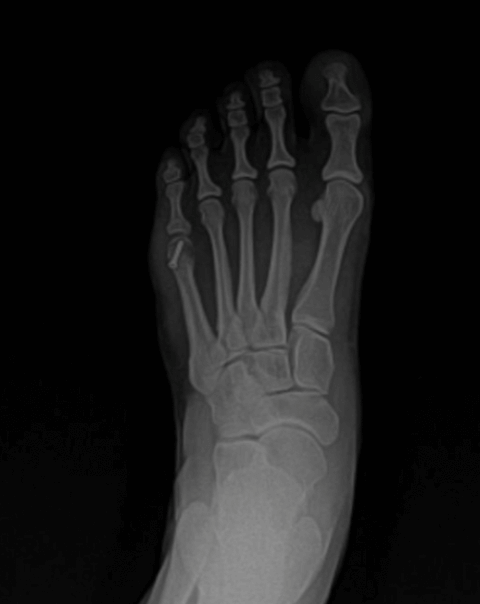
Dr. Timothy Young, a Board-Certified Foot Surgeon, Discusses Removal of Hardware After Foot Surgery.
Sometimes there is bone overgrowth, and this requires a larger incision and bone removal. This would happen typically if it h been more than one or two years after the original surgery. Prior to surgery using x-ray or ultrasound imaging one can plan ahead of time and allow for a much smaller surgical incision and therefore a much quicker postprocedure recovery. In these cases often just one simple suture or Steri-Strips is all that is necessary for wound repair. In the case of screws where there has been bone overgrowth, or plates the larger incision has to be made.
Therefore, there will be more wound healing and additional sutures required. In the case of hardware removal with just several small screws and small incisions, often there can be returned to activity within a week. If it is a larger procedure as described above involving a plate or bone overgrowth, then there may be a longer recovery of two weeks or even longer. Another intraoperative tool that we have within our ASC is fluoroscopy. Fluoroscopy can help locate hardware if there has been bone overgrowth or other factors making it difficult to find hardware during surgery.
If you are experiencing any foot or ankle pain, give us a call at 425-391-8666 or make an appointment online today.
Dr. Brandon Nelson, A Board Certified Physician & Surgeon, Discuss Heel Pain
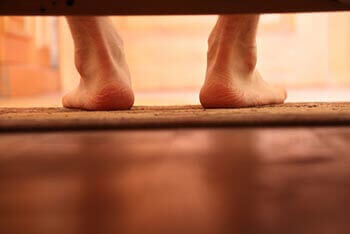
“Ouch my feet are killing me when I get out of bed!” This is what I used to say every morning. Heel pain can be so overwhelming and frustrating, especially if you are having pain with your first step in the morning. I remember those days so well and I could hardly bring myself to get out of bed. Plantar Fasciitis will affect about 60% of all adults at some point in their lifetime.
Heel pain or plantar fasciitis is by far the most common reason people seek care from a foot & ankle physician. Once a physician is involved normally recovery can be extremely fast. I specialize in treating heel pain and can get you back on your feet and on the road fairly quickly. The majority of patients I see are 50-80% better in less than 1 week. The fact I have suffered from it myself keeps me abreast to the latest and most effective techniques available to feel plantar fasciitis.
Not all heel pain is the same. There can be many other causes of heel pain that is why physician care is essential. An x-ray is warranted in order to rule out other causes and start the appropriate treatment. I find experience can be extremely valuable for heel pain care. There are quite a few outliers that can mimic plantar fasciitis. If you are suffering from heel pain I can help! Give us a call at 425-391-8666 or make an appointment online today.
Sincerely,
Dr. Brandon Nelson, A Board Certified Physician & Surgeon Discusses Heel Pain
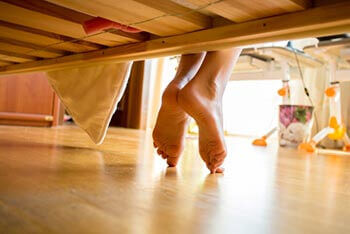
Heel pain can be very frustrating for anybody. We often hear of symptoms ranging from burning and tingling to a bruised sensation in the heel. The timing of the pain is typically after exercise or when first getting out of bed. The length of symptoms have existed seem to be months to years. Often there is no underlying injury and causes can vary by age but is more common in adults.
Heel pain is a common symptom of many pathologies. The most common being plantar fasciitis. This is a condition where a band of support tissue on the bottom of the foot is inflamed. It can become fatigued when overused. The most common cause in children is inflammation of a growth plate. This is often seen around sporting events or as children go through a rapid growth spurt. Regardless, both have many options available for treatment.
Treatment always begins with an x-ray. The x-ray is important to help rule out other causes and establish a diagnosis. Once a diagnosis is established we can begin to find causes and contributing factors. It is essential to identify things that may be potentiating the pain and dysfunction. Then a treatment plan can be established that will help to mitigate symptoms and work on recovery.
Recovery can be challenging as there may need to be a change in activities. I often see a correlation with the amount of time the patient has had the pathology with the recovery length. The longer a patient has had the issue the longer it can take to recover. The most important factor is to see a physician that specializes in your problem so you can get the correct plan to heal. If you have heel pain I can help please call us at 425-391-8666 or make an appointment online today.
Sincerely,
Dr. Brandon Nelson, A Board Certified Physician and Surgeon, Discusses Bunion Surgery and How He Can Help You Heal Faster
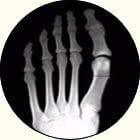
Bunion surgery involves one of two things. These are either cutting the bone and realigning the joint or realigning the joint and fusing bones together. The two different procedures depend on a whole host of variables like size of deformity, quality of bone, activities levels and age of the patient. Both of these types of procedures have excellent outcomes and are utilized extensively. Healing from either of these two procedures can be increased by concentrating on healing soft tissue and bone.
Soft tissue i.e. skin healing is part of the recovery process after bunion surgery. Incisions are required to access the boney correction and often soft tissue release. There are often incisions in joint capsules, release of ligaments and even release of tendons. Additionally, sometimes soft tissue balancing or plication of capsular tissues are required. Regardless, there are things you can do to heal skin faster after surgery. These include taking biotin, collagen and zine. Supplements are important to ensure adequate nutritional support happens and the building blocks of soft tissue requires certain minerals, peptides and proteins. A good diet and avoiding things like alcohol and Tobacco is important as well for both skin and bone healing.
Bone healing also can be increased with dietary supplements. I recommend Pro-bono for all my post-op patients. This supplement is extremely powerful in healing bones and I often see recovery time decrease by 1-2 weeks. Another tool that can be helpful is a bone stimulator. These are devices that help the body produce bone. Each device is a little different but they work by stimulating cells that produce bone. These usually require a prescription from your doctor. Lastly, make sure to follow your surgeon's advice. If you have a bunion I would love to help you decrease your post-operative healing course!
Sincerely,



